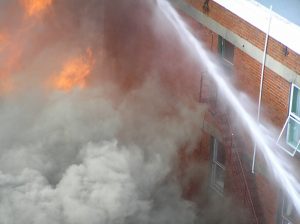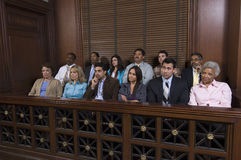 In a recent case, Commonwealth v. Pfeiffer, the Supreme Judicial Court ruled that the judge’s supplemental instruction on arson was erroneous, because it gave the jury the option of convicting on the grounds that the defendant intentionally failed to extinguish or report a fire which had been accidently or negligently set.
In a recent case, Commonwealth v. Pfeiffer, the Supreme Judicial Court ruled that the judge’s supplemental instruction on arson was erroneous, because it gave the jury the option of convicting on the grounds that the defendant intentionally failed to extinguish or report a fire which had been accidently or negligently set.
The background was as follows. “Following an argument with her boyfriend, the defendant set a bag of his clothes on fire inside their apartment, then fled the building,” “locking the exterior door of the building behind her, and without calling for help or alerting other occupants.” “One person died in the resulting two-alarm fire. Three others, including two firefighters, were injured.” Prior to trial, “the Commonwealth represented that its theory [of arson] was based on the [defendant’s] setting of the fire, not [her] failure to act after the fire was set…. At trial, the Commonwealth largely abided by [that] representation…. However, during the charge conference, the trial judge, without prompting from the Commonwealth, suggested she was inclined based on the evidence to provide the jury with a supplemental instruction that, in its final form, stated” that “‘a person may have the required intent for arson if he or she negligently or accidentally causes a fire and then willfully and maliciously makes no attempt to extinguish it or to report it. In that circumstance, the necessary criminal state of mind for arson … may be formed after the fire starts.’” Over the defendant’s objection, the judge provided the supplemental instruction. On appeal, “the defendant argue[d] that the supplemental instruction was improper because [the arson statute,] G.L. c.266, §1, does not criminalize the wilful and malicious failure to extinguish or report an accidentally or negligently set fire.” Continue reading →
 Massachusetts Criminal Lawyer Blog
Massachusetts Criminal Lawyer Blog










